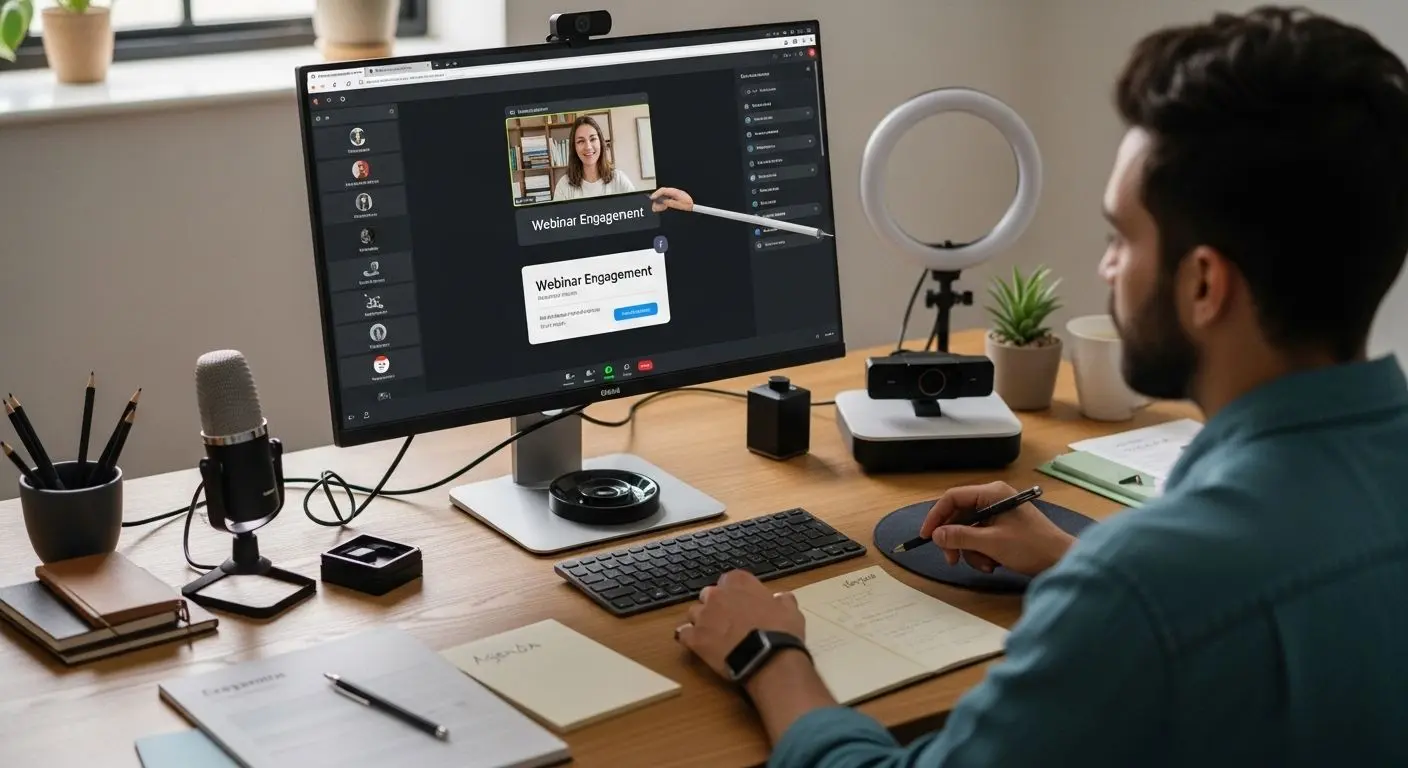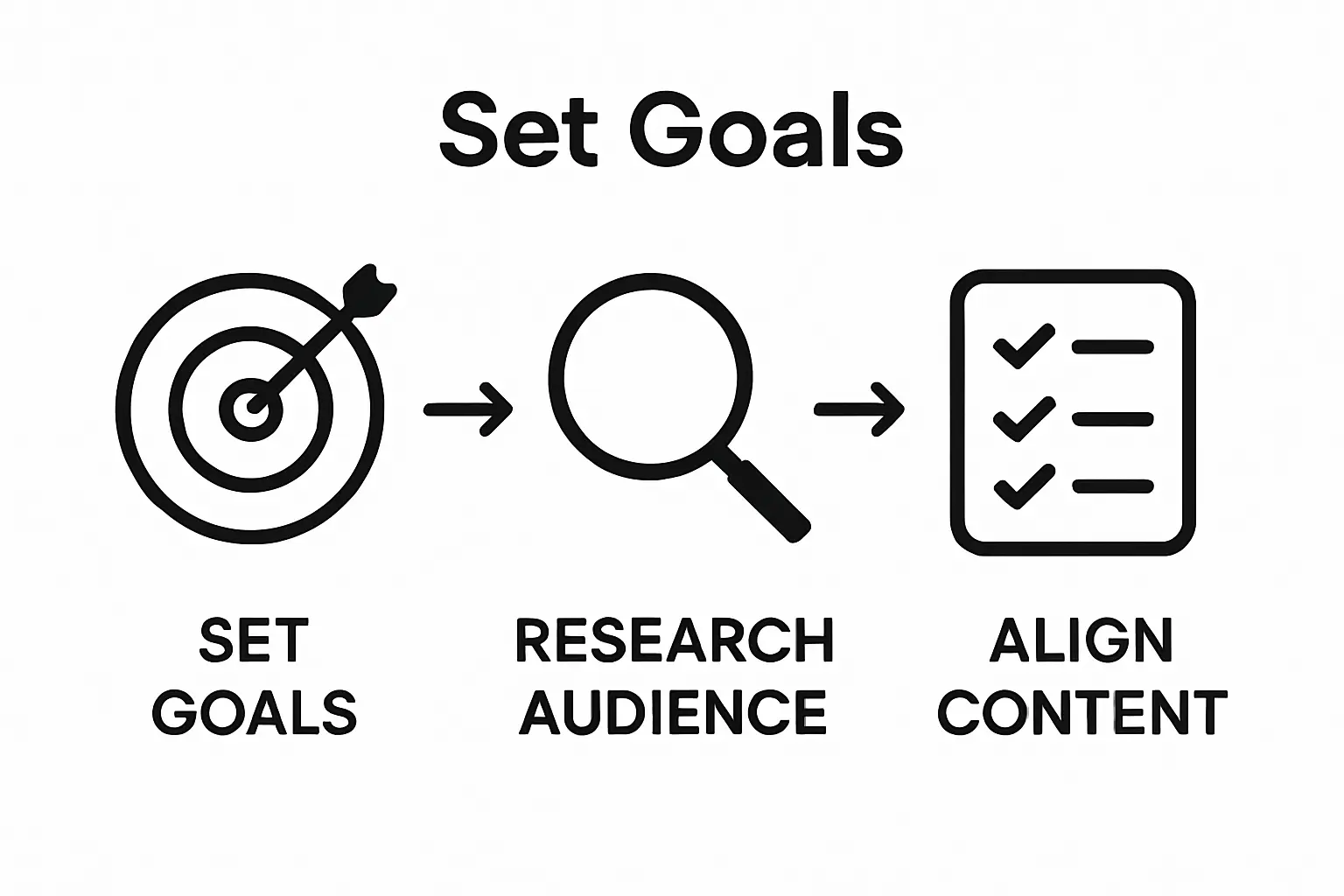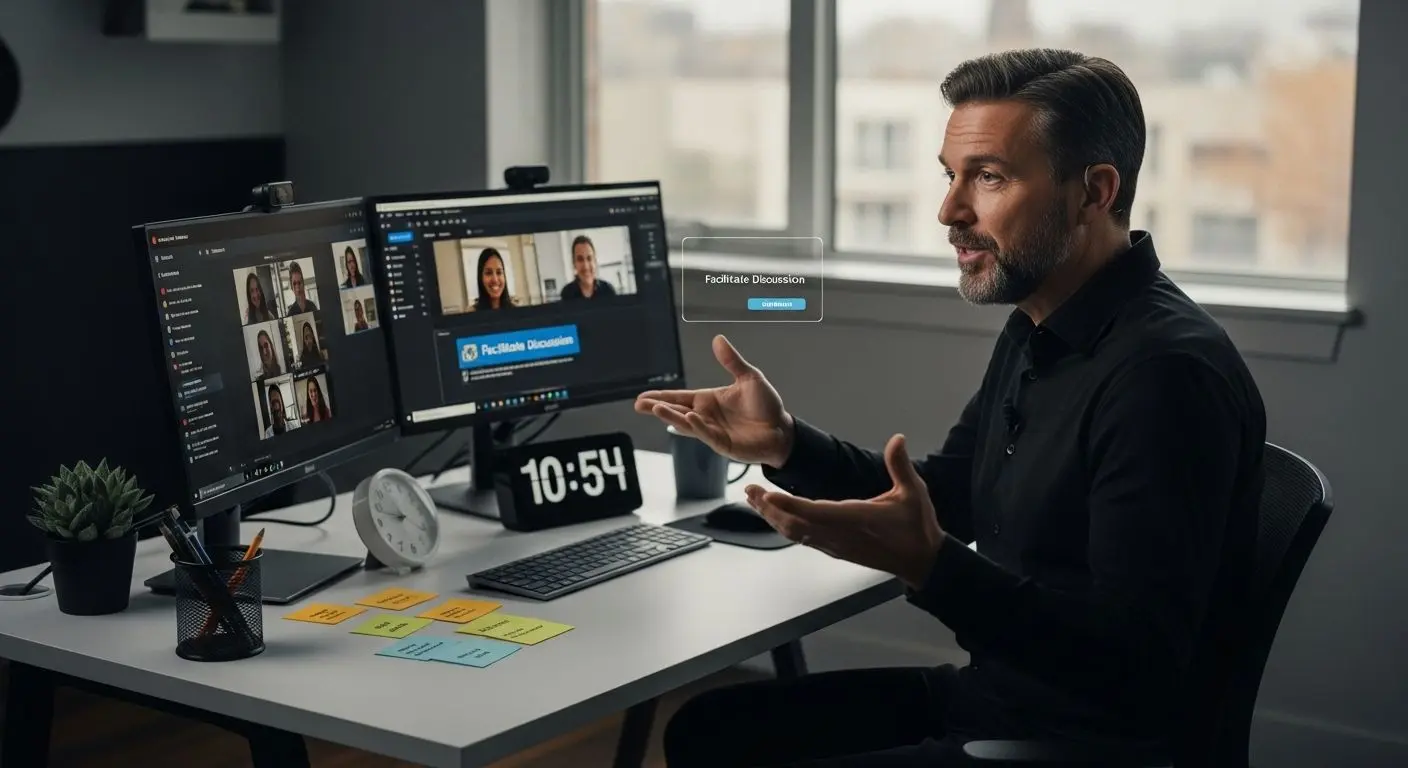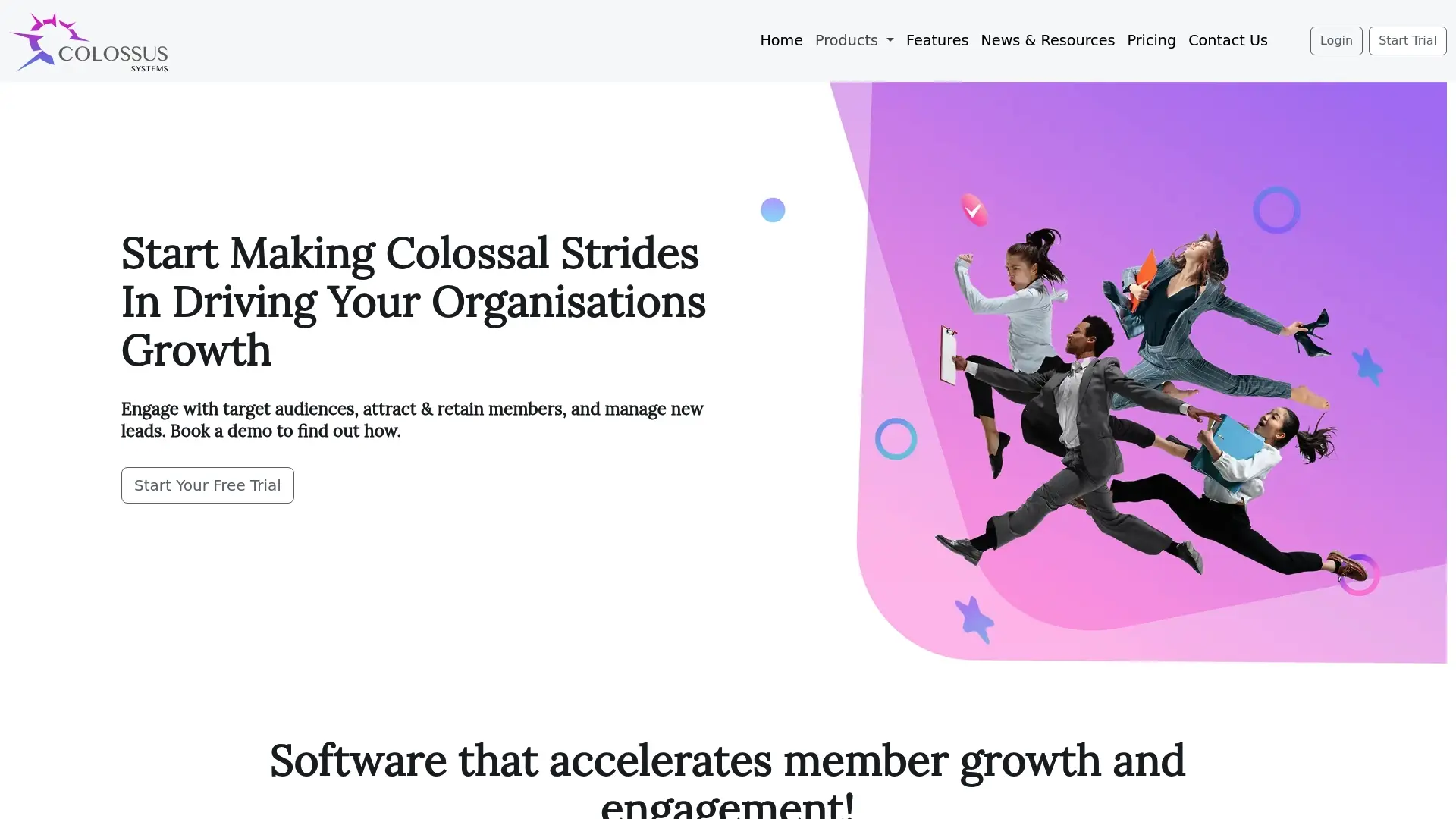How to Host Webinars Effectively for Engagement
Planning a standout webinar is no longer about simply putting together some slides and sending calendar invites. Every detail, from your audience profile to your feedback email, can completely change the outcome. Oddly, midweek sessions see the highest attendance rates and specific objectives like increasing brand awareness or generating qualified leads can entirely reshape your approach. Most people focus on flashy tech and last-minute promotion but real success comes from the groundwork: strategy and understanding your audience hold the power to turn any webinar from forgettable to genuinely impactful.

Table of Contents
- Step 1: Define Your Webinar Goals And Audience
- Step 2: Choose The Right Webinar Platform And Tools
- Step 3: Schedule Your Webinar And Promote It
- Step 4: Prepare Your Content And Engage Participants
- Step 5: Execute The Webinar And Facilitate Discussion
- Step 6: Gather Feedback And Follow Up With Attendees
Quick Summary
| Key Point | Explanation |
|---|---|
| 1. Define clear webinar objectives | Establish specific goals to guide content and engagement strategies throughout the planning process. |
| 2. Research your target audience thoroughly | Develop detailed audience profiles to tailor content to their professional needs and learning preferences. |
| 3. Choose an interactive webinar platform | Select a platform that enhances participant engagement with features like live polling and Q&A sessions. |
| 4. Schedule thoughtfully and promote effectively | Choose optimal timing and a multi-channel promotional strategy to maximise registrations and attendance. |
| 5. Collect feedback for continuous improvement | Post-webinar surveys and tailored follow-up communications help build relationships and enhance future events. |
Step 1: Define Your Webinar Goals and Audience
Successful webinars begin with crystal clear objectives and a deep understanding of your target audience. This foundational step determines the entire strategic approach to your virtual event, influencing everything from content design to marketing tactics. Without precise goals and audience insights, your webinar risks becoming an unfocused presentation that fails to engage or deliver meaningful value.
Starting your webinar planning requires a strategic assessment of what you want to achieve. Are you aiming to generate leads, educate potential clients, demonstrate product capabilities, or build thought leadership within your industry? Each goal demands a unique approach and content strategy. Specific objectives might include increasing brand awareness, generating qualified sales leads, training existing customers, or establishing your organisation as an expert in a particular domain.
Understanding your audience goes beyond basic demographic information. You need to conduct comprehensive research into their professional challenges, learning preferences, and information needs. Consider developing audience personas that capture not just age and job title, but deeper insights like typical pain points, professional aspirations, and preferred learning styles. This detailed profiling allows you to craft content that speaks directly to their experiences and motivations.
Audience research involves multiple approaches. Professional networking platforms, industry surveys, customer feedback channels, and direct communication with potential attendees can provide rich insights. Utilise analytics from previous events, review engagement metrics from related content, and potentially conduct short pre-event surveys to validate your understanding.
Discover advanced audience targeting strategies that can transform your webinar preparation process. By aligning your goals with audience expectations, you create a powerful foundation for an engaging and impactful virtual event that delivers genuine value to participants.
Verification of this step involves answering key questions: Have you clearly defined 2-3 specific webinar objectives? Can you describe your target audience in detailed, meaningful terms? Do you understand their primary motivations for attending? If you can confidently respond to these queries, you have successfully completed the crucial first stage of webinar planning.

Step 2: Choose the Right Webinar Platform and Tools
Selecting the appropriate webinar platform transforms your virtual event from a basic presentation into an engaging, interactive experience. Your technological foundation determines audience interaction, presentation quality, and overall participant satisfaction. The right platform bridges the gap between your content and your audience’s digital experience.
Webinar platform selection requires a comprehensive evaluation of multiple factors. Consider your specific requirements such as audience size, interactive features, recording capabilities, and budget constraints. Professional platforms offer varied functionalities ranging from basic video streaming to complex engagement tools like live polling, Q&A sessions, breakout rooms, and detailed participant analytics. Some platforms provide seamless integration with customer relationship management systems, allowing you to track participant interactions and generate valuable lead data.
Evaluate platform features through a strategic lens. Look beyond surface-level pricing and examine critical elements like user interface intuitiveness, technical support quality, maximum participant capacity, and compatibility with your existing technological infrastructure. Key considerations include streaming quality, mobile responsiveness, security protocols, and ease of use for both presenters and participants. Some platforms offer free trials, which provide an excellent opportunity to test functionality and user experience before making a final commitment.
Explore advanced virtual event hosting techniques to elevate your webinar platform selection strategy. Remember that your chosen platform should not just facilitate presentation but create an immersive, interactive environment that keeps participants engaged and encourages meaningful connection.
Verification of this step involves confirming you have:
- Identified at least three potential webinar platforms
- Compared their features against your specific requirements
- Tested platform interfaces through free trials or demonstrations
- Confirmed technical compatibility with your organisation’s existing systems
By methodically assessing your webinar platform, you establish a robust technological foundation that will support your event’s success and participant engagement.
Selecting the right webinar platform is critical. Below is a comparison of key features mentioned in the article for evaluating webinar platforms, so you can quickly assess which best matches your needs.
| Platform Feature | Why It Matters | Considerations |
|---|---|---|
| Interactive Tools | Keeps audience engaged (polls, Q&A, breakout rooms) | Essential for engagement |
| Recording Capabilities | Allows sharing and review after the event | Helps with post-event value |
| Participant Capacity | Supports total expected audience size | Scale as needed |
| CRM Integration | Streamlines lead tracking and follow-up | Data centralisation |
| User Interface | Affects ease-of-use for both host and attendees | Intuitive = smoother event |
| Mobile Responsiveness | Ensures accessibility across devices | Wider reach |
| Security & Support | Protects data and enables smooth technical operation | GDPR compliant, prompt help |
Step 3: Schedule Your Webinar and Promote It
Webinar scheduling and promotion represent critical touchpoints that transform your carefully crafted content into a well-attended, engaging event. Timing is everything when attracting your target audience, requiring strategic planning and multi-channel communication approaches that capture potential participants’ attention and drive registration.
Selecting the optimal webinar time demands careful consideration of your audience’s professional schedules and geographical distribution. Midweek timeslots typically yield the highest attendance rates, with morning or early afternoon sessions performing best for professional audiences. Consider time zones carefully, particularly if your audience spans multiple regions. Tools like scheduling platforms with timezone conversion features can help identify windows that maximise potential participant availability. Avoid scheduling during common meeting hours or known industry peak periods that might compete with your event.
Promotion requires a comprehensive, multi-channel strategy that extends beyond simple email invitations. Leverage professional networking platforms, industry forums, social media channels, and targeted email campaigns to create anticipation and drive registrations. Craft compelling promotional messages that highlight the unique value proposition of your webinar, emphasising specific learning outcomes, expert insights, or exclusive information participants will gain. Create a sense of urgency by indicating limited attendance slots or early bird registration discounts.
Discover advanced event marketing techniques to amplify your webinar’s reach and engagement potential. Develop a consistent communication cadence that includes initial announcement, reminder emails, and last-minute registration prompts. Each communication should reinforce the webinar’s value and make registration as frictionless as possible.
Verification of this step involves confirming you have:
- Selected an optimal date and time for your webinar
- Created a comprehensive promotional strategy
- Developed engaging marketing materials
- Set up a simple, streamlined registration process
By meticulously planning your webinar’s scheduling and promotion, you significantly increase the likelihood of attracting a robust, engaged audience eager to participate in your virtual event.
Step 4: Prepare Your Content and Engage Participants
Content preparation and participant engagement represent the heart of a successful webinar, transforming a passive presentation into an interactive learning experience. Your primary goal is to create a dynamic environment that captures and maintains audience attention, converting viewers from passive observers to active participants.
Designing compelling webinar content requires a strategic approach that goes beyond traditional slide presentations. Develop a narrative structure that tells a story, using real-world examples, case studies, and practical insights that directly relate to your audience’s professional challenges. Visual storytelling becomes crucial this means crafting slides that are clean, minimalist, and visually striking. Incorporate graphics, charts, and infographics that illustrate complex concepts quickly and memorably. Avoid text-heavy slides that overwhelm participants, instead focusing on key messages that spark curiosity and encourage deeper exploration.
Interactivity is the cornerstone of engaging webinar experiences. Implement multiple engagement techniques throughout your presentation to maintain participant interest. Live polling allows real-time audience participation, creating a sense of collective experience. Q&A sessions provide opportunities for direct interaction, enabling participants to seek clarification and dive deeper into topics. Consider introducing interactive elements like live chat, digital whiteboards, or breakout discussion rooms that transform your webinar from a monologue into a collaborative learning environment.
Explore advanced event engagement strategies to elevate your webinar’s participant interaction. Preparation involves more than content design it requires technical rehearsals, timing practice, and anticipating potential technical challenges. Record practice sessions to refine your delivery, checking for clarity, pace, and engagement potential. Develop contingency plans for potential technical interruptions, ensuring a smooth experience regardless of unexpected circumstances.
Verification of this step involves confirming you have:
- Created a compelling, story-driven presentation
- Developed multiple interactive engagement methods
- Practiced presentation delivery
- Prepared technical backup plans
By meticulously preparing your content and designing multiple engagement touchpoints, you create a webinar experience that resonates, educates, and inspires your participants.
Step 5: Execute the Webinar and Facilitate Discussion
Webinar execution represents the critical moment where months of preparation converge into a live, dynamic experience. Successful facilitation transforms your carefully crafted content into an interactive, memorable event that resonates with participants long after the session concludes. Your primary objective during this stage is to deliver content seamlessly while creating an environment that encourages active participation and meaningful dialogue.
Technical preparation is paramount in the moments before your webinar begins. Arrive at least 30 minutes early to conduct final system checks, ensuring your audio, video, and screen sharing capabilities function flawlessly. Test your internet connection, verify microphone quality, and have backup communication methods ready in case of unexpected technical disruptions. Dress professionally, choose a clean, neutral background, and position your camera at eye level to create a sense of direct connection with your audience. Maintain a confident, enthusiastic demeanor that communicates your expertise and passion for the subject matter.
Facilitating discussion requires a delicate balance of structured presentation and spontaneous interaction. Introduce interactive elements strategically throughout your webinar, using techniques like live polling, Q&A segments, and real-time chat interactions to maintain participant engagement. Develop a conversational tone that invites dialogue, asking open-ended questions that prompt deeper reflection and participation. Monitor participant responses actively, acknowledging contributions and weaving audience insights into your presentation narrative. This approach transforms your webinar from a monologue into a collaborative learning experience.
Discover advanced virtual event facilitation techniques to elevate your webinar hosting skills. Anticipate potential technical challenges by having a backup presenter or technical support team member ready to manage unexpected interruptions. Prepare concise, clear responses to anticipated questions, demonstrating your expertise while remaining adaptable to emerging participant interests.
Verification of this step involves confirming you have:
- Completed comprehensive technical preparations
- Maintained high-energy, engaging presentation style
- Actively facilitated participant interactions
- Managed time effectively
By executing your webinar with precision, confidence, and genuine participant-focused enthusiasm, you create an exceptional learning experience that distinguishes your virtual event from ordinary presentations.

Step 6: Gather Feedback and Follow Up with Attendees
The conclusion of your webinar marks the beginning of a critical relationship-building phase that transforms a single event into an ongoing engagement opportunity. Effective post-webinar communication demonstrates your commitment to participant learning and continuous improvement, creating a foundation for future interactions and potential long-term professional relationships.
Designing a comprehensive feedback mechanism requires thoughtful strategy and precision. Create a concise, well-structured survey that captures both quantitative and qualitative insights. Develop questions that explore specific aspects of the webinar experience, including content relevance, presentation quality, technical execution, and perceived value. Aim for a survey that takes no more than five minutes to complete, using a mix of rating scales and open-ended questions that invite detailed, constructive feedback. Distribute the survey within 24 hours of the webinar’s conclusion, while participants’ impressions remain fresh and vivid.
Follow-up communication extends beyond simple feedback collection. Craft a personalised email that acknowledges participants’ time and engagement, providing additional resources that complement the webinar’s content. Include a recording of the session, supplementary reading materials, or links to related resources that demonstrate your commitment to participant continued learning. Segment your follow-up communications based on participant interaction levels, creating tailored messages that resonate with different engagement profiles. For highly engaged participants, consider offering exclusive content or early access to future webinars as a way of nurturing their interest and building a community around your expertise.
Explore advanced participant engagement strategies to transform post-webinar interactions into meaningful professional connections. Analyse feedback data systematically, looking for patterns and insights that can inform future webinar design. Use participant suggestions as a roadmap for continuous improvement, demonstrating your responsiveness and dedication to delivering exceptional learning experiences.
Verification of this step involves confirming you have:
- Distributed a comprehensive feedback survey
- Sent personalised follow-up communications
- Compiled and analysed participant feedback
- Developed improvement strategies based on insights
By treating post-webinar engagement as a strategic opportunity, you convert a single event into a stepping stone for ongoing professional relationships and future learning opportunities.
Here is a summary checklist to help you verify completion of each main step in the webinar process. Use this table to ensure you have met all requirements before moving forward to the next stage.
| Step | Verification Criteria |
|---|---|
| Define Goals and Audience | 2-3 clear objectives set; detailed audience personas created; primary motivations identified |
| Choose Webinar Platform and Tools | 3+ platforms evaluated; key features compared; demo or free trial done; technical compatibility confirmed |
| Schedule and Promote Webinar | Date/time selected for audience; full promotional strategy crafted; engaging materials made; registration streamlined |
| Prepare Content and Engagement Methods | Story-driven slides done; interactivity designed; presentation practised; technical contingency in place |
| Execute Webinar and Facilitate | Technical checks complete; energetic delivery; interactions facilitated; managed timing effectually |
| Gather Feedback and Follow Up | Survey sent within 24 hours; personalised emails sent; feedback analysed; improvement plan generated |
Elevate Your Webinar Engagement with Colossus Systems
Are you struggling to turn your webinars into truly interactive, high-value experiences? The article has highlighted challenges such as lack of clear goals, mismatched platforms, and difficulties in participant interaction. Many membership organisations find it hard to keep attendees engaged and build relationships after each session. These common pain points can leave your virtual events feeling flat and your growth potential untapped.

Now you can transform every stage of your event with Colossus Systems. Our platform is designed for membership-based organisations that need streamlined event planning, advanced engagement tools, robust CRM, and targeted marketing in one flexible solution. Remove the guesswork from your webinar engagement strategies by centralising registration, live interaction, and post-event analysis. Do not let another opportunity for meaningful connection pass you by. Discover how Colossus Systems can help turn your webinars into powerful catalysts for growth today.
Frequently Asked Questions
What are the key steps to plan an effective webinar?
The key steps include defining your goals and audience, selecting the right platform and tools, scheduling and promoting your webinar, preparing engaging content, executing the webinar effectively, and gathering feedback post-event.
How do I determine the best time to schedule my webinar?
Consider your audience’s professional schedules and time zones. Midweek time slots in the morning or early afternoon often yield higher attendance rates, so analyse when your target audience is most likely available.
What techniques can be used to engage participants during a webinar?
Incorporate interactive elements such as live polling, Q&A sessions, and discussion rooms throughout your presentation. Additionally, encourage audience interaction by asking open-ended questions and acknowledging participant contributions.
How can I effectively follow up with webinar attendees?
Send a personalised follow-up email within 24 hours, thanking attendees and providing them with resources such as a session recording, supplementary materials, and a feedback survey to improve future webinars.
Recommended
- How to Host Virtual Conferences: A Step-by-Step Guide|CS
- Event Marketing Strategies for Membership Groups and Associations|CS
- Effective Event Registration Strategies for 2025 Success|CS
- Online Learning Engagement: Practical Strategies for Organisations|CS
- Real Estate Lead Nurturing Strategies for 2025 Success
- Podcast Engagement Metrics: What Brands and Listeners Nee… | Prodcast